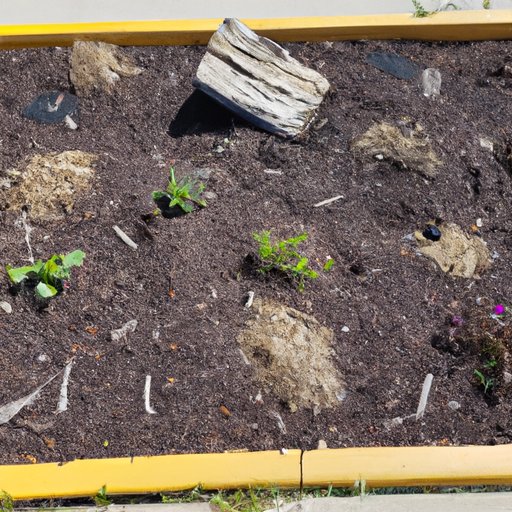Introduction
A flower bed is an area of soil that is planted with flowers, herbs, and other ornamental plants. They are a great way to liven up any outdoor space, from a large garden to a small balcony. Not only do they make a beautiful addition to your property, but they also offer numerous benefits such as increasing the value of your home, reducing air pollution, attracting beneficial insects, and providing food for birds and other wildlife.

Choose the Right Location for Your Flower Bed
Before you begin planning your flower bed, it is important to consider the space available. You need to ensure that the flower bed is not too close to a wall or fence, as this could limit the amount of sunlight the plants receive. It is also important to check the soil composition and drainage in the area. Poor drainage can cause your plants to become waterlogged, so you may need to adjust the soil or choose plants that are better suited to wetter conditions.
The amount of sunlight the flower bed will receive is also important. Different plants require different levels of sunlight, so you should take into account the orientation of the flower bed and the surrounding trees or buildings that could block out light. Once you have considered all these factors, you can start to plan the shape and size of your flower bed.

Plan the Shape and Size of Your Flower Bed
When designing the shape and size of your flower bed, it is important to think about the contour of the land and the type of plants you want to grow. You should also consider the height of your plants when deciding on the shape and size of your flower bed. Borders and edging can be used to define the shape of the flower bed and keep the plants in place.
Prepare the Soil
It is important to test the soil composition before planting in your flower bed. This will help you determine which amendments you need to add to the soil in order to create an optimal environment for your plants. You may need to add compost, fertilizer, or other soil amendments depending on the type of plants you are growing.

Add a Layer of Mulch
Adding a layer of mulch to your flower bed can help to retain moisture, reduce weeds, and improve the appearance of the bed. There are several types of mulch to choose from, such as wood chips, pine needles, straw, and shredded bark. Whichever type of mulch you choose, it is important to spread it evenly over the surface of the flower bed and ensure that it is not too thick, as this can prevent water and air from reaching the roots of the plants.
Select Plants Suited to Your Climate
When selecting plants for your flower bed, it is important to research the local climate and choose plants that are suited to the conditions in your area. There is a wide variety of plants to choose from, including annuals, perennials, shrubs, and trees. Consider the color and texture of the plants you choose, as well as their water and sunlight requirements.
Plant in Layers
When planting your flower bed, it is important to group plants according to their height, texture, and color. This will help to create a visually pleasing effect and will also allow the plants to thrive in their environment. Planting in layers will also help to conserve moisture in the soil and reduce competition between plants for resources such as sunlight and water.
Provide Adequate Water and Sunlight
Once you have planted your flower bed, it is important to provide adequate water and sunlight. Depending on the type of plants you have chosen, the frequency of watering will vary. Access to sunlight is also important, as some plants require more sun than others. If the flower bed is in a shady area, you may need to move some of the plants to a sunnier spot.
Conclusion
Creating a beautiful flower bed does not have to be difficult. By following the steps outlined above, you can create a stunning display that will bring life and color to any outdoor space. From choosing the right location to providing adequate water and sunlight, each step is essential for ensuring that your flower bed thrives. With the right preparation and care, you can reap the benefits of a gorgeous flower bed for years to come.


